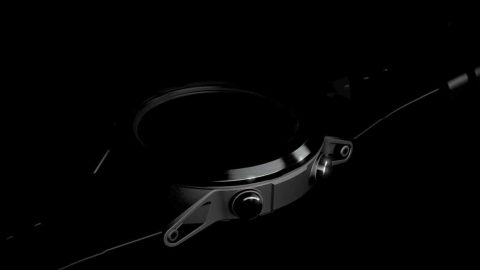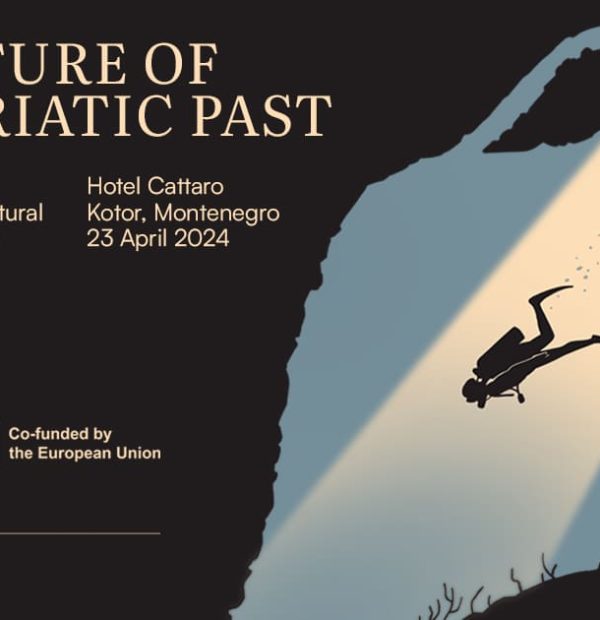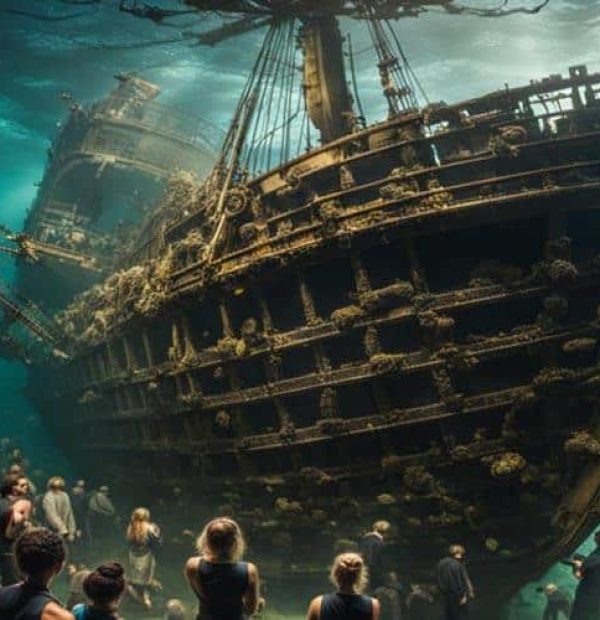Thursday, 16 May 2024
Menu

This article presents the results of the scientific project “Assessment of the degree of degradation of archaeological artefacts in Polish lakes and proposals of ways to protect the sites in the future”, carried out by the Scientific Circle of Underwater Archaeology in 2014. The research team documented the vessels resting on the bottom of Lakes Hańcza and Łańskie. On the basis of photographs, drawings and measurements of the monuments and comparison with old documentation, it was concluded that intensive tourist traffic and the lack of awareness of divers about the historical value of the dugout canoes damage these objects. In the future it is planned to continue the project and to place information boards at the bottom of the lakes.
Zuzanna Jędrzejczak, Marta Kuśnierek
Research Group on Underwater Archaeology
Evaluation of the degree of degradation of archaeological monuments in Polish lakes and proposals of ways to secure sites in the future
The research project ‘Evaluation of the degree of degradation of archaeological artefacts in Polish lakes and proposals of ways to protect the sites in the future’ was carried out by the Underwater Archaeology Research Circle, active at the Institute of Archaeology, University of Warsaw since April 2013. Most members of the Circle are certified divers, but also non-diving enthusiasts of underwater archaeology.
Fig. 1. Unit from Lake Hancza. Fig. Zuzanna Jędrzejczak
The aim of the project was to assess the state of preservation of known archaeological artefacts buried at the bottom of the Polish lakes Hańcza and Łańcza, and to select the best method for protecting such sites. The project was supervised by Bartosz Kontny, PhD, and Artur Brzóska, MA, from the Institute of Archaeology at the University of Warsaw. The research was conducted during two trips in May 2014 – to Lake Hańcza (16-18.05.2014) and Lake Łańskie (27-30.05.2014). The undertaking was partly financed by the Consultative Council for the Student Research Movement, support was also provided by the Institute of Archaeology, which lent the project implementers a rescue oxygen kit free of charge, which helped to ensure safety during the dive.
Fig. 2. Stern of a dredger from Lake Hancza. Photo: M. Kuśnierek
The one-footed boats from the Hańcza and Łańskie lakes are a well-known tourist attraction and at the same time a rare archaeological monument, which is exposed to destruction not only by environmental conditions, but also by man. The sites date back to the 17th century AD. (Ossowski 2010; Mirakowski 2014: 13). Many diving clubs and centres offer their clients tourist diving with the aim of visiting archaeological underwater sites. For this reason, students of the Circle decided to check how intensive tourist traffic affects the degradation of such sites and how monuments can be protected from progressive destruction. Many divers are probably unaware of the historical value of these vessels, and as they rest at the bottom of the lake, it is impossible to control the behaviour of “visitors”. It is therefore necessary to make divers aware of the value of the hulls.
Single-seater boats
Single-footed boats, also known as hulls, were made from a single log of various species of wood. Initially, vessels made of oak wood predominated, probably due to its hardness and durability, from later times cases of using other species of wood are also known (Ossowski, 2010: 17; Szymczak 1998). In inland navigation, longboats were one of the most frequently used means of transport. Their popularity was largely due to the relatively easy production process and availability of raw material. In Poland, boats of this type have been present from the Neolithic period to modern times. We know 333 vessels of this type from the Polish lands, 154 of which have been disbursed using the radiocarbon method – most of them come from the Middle Ages and modern times (Ossowski, 2010: 20; Szymczak 1998; Litwin 1995).
Fig. 3. Dłubanka from Lake Hańcza, bulkhead. Photo: M. Kuśnierek
The process of building the vessel began with cutting a tree of appropriate size, then the log was stripped of its bark and branches. The next stage was to form the stern and the bow of the vessel and to remove the excess wood from its interior using tools and fire. The width of the vessel was limited by the width of the tree trunk, which during the process of forming the sides still lost up to 20 cm in diameter (Ossowski, 2010: 17). In order to increase the span of the sides, various methods of widening were used, often taking advantage of the increased plasticity of wood under the influence of heat. In order for the wood to keep its new shape, various types of brackets and spacers were installed in boats. We also know of the practice of raising the sides by hammering staves in their upper part. Sometimes the interior of the boat was also divided into chambers by leaving bulkheads.
Research methodology
The work was carried out by recreational divers using appropriate diving equipment. At both sites the members of the research team carried out the necessary measurements, as well as drawing and photographic documentation of the objects. All dives were carried out in accordance with the safety rules in force, maintaining the no-decompression diving limits, which correspond to the authorisations of the expedition members. The work was significantly limited by the time of the dives – at a depth of 40m one can safely stay for only 6 minutes, and it is extremely difficult to perform all the planned activities in such a short time. Another difficulty was the temperature – 4 degrees Celsius – which quickly cools down the body, even for a man in a specialist suit. In order to streamline the work, lowering lines were installed at the diving stations so that the divers could quickly and safely reach the monuments without having to waste time searching for them each time. At the bottom, the divers started to document the excavation with photographs and drawings, which was not made easier by the prevailing Egyptian darkness – despite photographic lamps and numerous torches, not much could be seen.
Lake Hancza
The research team made four dives on the site. During the first dive the objects were photographed, during the second one – the preliminary measurements, and during the last two – the drawing documentation (Fig. 1). Unfortunately, the works were hampered by the depth of the objects (40 m) and intensive tourist traffic, which resulted in complete documentation of only one of the three boats lying on the bottom of Hańcza River (the best preserved one, which was also documented by members of Wo.do.lot Society – Piotr Prejs and Maciej Marciniak – during their research conducted in 2008). The data obtained were used to analyse the rate of degradation of the objects by comparing the old documentation with the latest.
Fig. 4. A tubewell from J. Łański. Fig. Zuzanna Jędrzejczak
The two vessels resting in Lake Hancza are only vaguely preserved, with only a few centimetre fragments of their sides sticking out from the bottom. The object, which was documented during this year’s research, is better preserved: it is 231 cm long, and in its stern and bow bulkheads have been preserved: the rear one is 90 cm from the stern (Fig. 2), while the front one is 81 cm from the bow of the vessel. The stern bulkhead (Fig. 3) is 41 cm wide, the one at the bow is 2 cm narrower. The ends of the boat are semicircular, the bow is only slightly more sharply pointed.
Lake Łańskie
Our activities on Lake Łańcza were similar to those on Lake Hańcza – the team members performed eight dives on the site, during which photographic and drawing documentation (Fig. 4) and necessary measurements were obtained. The dredge from Lake Łańcza is 4.1 m long, its width varies from 54 to 57 cm. Measuring the height of the sides was made difficult by the fact that the boat is buried deep in the silt, but they are probably no more than 50 cm high. Both the bow and stern of the vessel have pointed ends (Fig. 5). In the stern there is a bulkhead, 140 cm away from the end of the boat, its width is 7 cm.
Fig. 6. A sharp-arched end of a hollow-boat from J. £añski. Photo: B. Kontny
The greatest damage is visible in the bow part of the dugout: numerous cavities were observed on the sides, especially in the upper part. At the stern, there is a visible cavity, which was created when amateur divers pulled out the vessel in 1998. Lack of adequate experience in excavating this kind of relics, and poor preparation of the equipment caused the vessel to be damaged (Mirakowski, 2014: 15). A crack is also visible on the bulkhead.
Conclusions
The research carried out showed that the underwater monuments of the Polish lakes require additional protection. The comparison of the state of preservation of the dugout canoes known from the diver’s photographs from several years ago, with the present state of preservation of the monuments showed that both vessels are slowly degrading. This destruction is most probably a result of the unawareness of divers, who come across these monuments on a daily basis without any idea of their historical value. In order to take better care of the fate of the trawlers from the Hańcza and Łańskie lakes, we should consider how to inform underwater tourists that while diving they are communing with Polish cultural heritage protected by law.
Fig. 7. Dłubanka from Lake Hańcza, bulkhead. Photo: M. Kuśnierek
It is therefore planned to put up information boards on the site during the next season, indicating the historic nature of the buildings and prohibiting the disturbance of their structure (this will be done in consultation with the conservation authorities, also as to the content of the boards).
Bibliography
Litwin J.
1995 “Polish Folk boatbuilding of the 20th century”, Prace Centralnego Muzeum Morskiego, t. X, Gdańsk
Mirakowski M.
2014 “Dłubanka from Lake Łański in the context of analogous finds from the Mazurian Lake District”; unpublished master’s thesis; Institute of Archaeology, University of Warsaw; typescript stored at the Institute of Archaeology, University of Warsaw
Ossowski W.
2000 “Some results of the study of logboats in Poland” in: “Down the river to the sea. Proceedings of the Eight International Symposium on Boat and Ship Archaeology”.
2010 “Przemiany w szkutnictwie rzecznym w Polsce” Central Maritime Museum in Gdańsk
Szymczak A.
1998 “On the oldest boats in Poland” in: Materiały Zachodniopomorskie XLIII (1997); pp. 99-113










Welcome to DIVERS24.COM, your daily source of scuba news, freediving, scuba diving information, and equipment reviews. Our comprehensive coverage of the dive industry from A to Z provides you with all the latest scuba news, training updates, underwater photography tips, and everything else related to scuba diving. Whether you’re a beginner or an experienced diver looking for more knowledge about scuba gear or techniques – we’ve got it covered! With our in-depth articles written by experienced divers who have been there and done that, you are sure to find exactly what you need here at Divers24.com. Dive into scuba news today!
Underwater Media Sp. z o.o.
Szafarnia 11/F8,
80-755 Gdansk, Poland
Welcome to DIVERS24.COM, your daily source of scuba news, freediving, and scuba diving information. Sign in for a weekly news update and discount coupons for dive gear and apparel.
@2023 - underwatermedia.pl. All Right Reserved. Designed and Developed by Tworzenie stron internetowych Gdansk

The Divers24 portal is currently the largest online medium treating diving in Poland. Since 2010 we have been providing interesting and important information from Poland and around the world on all forms of diving and related activities.
Contact us: info@divers24.com